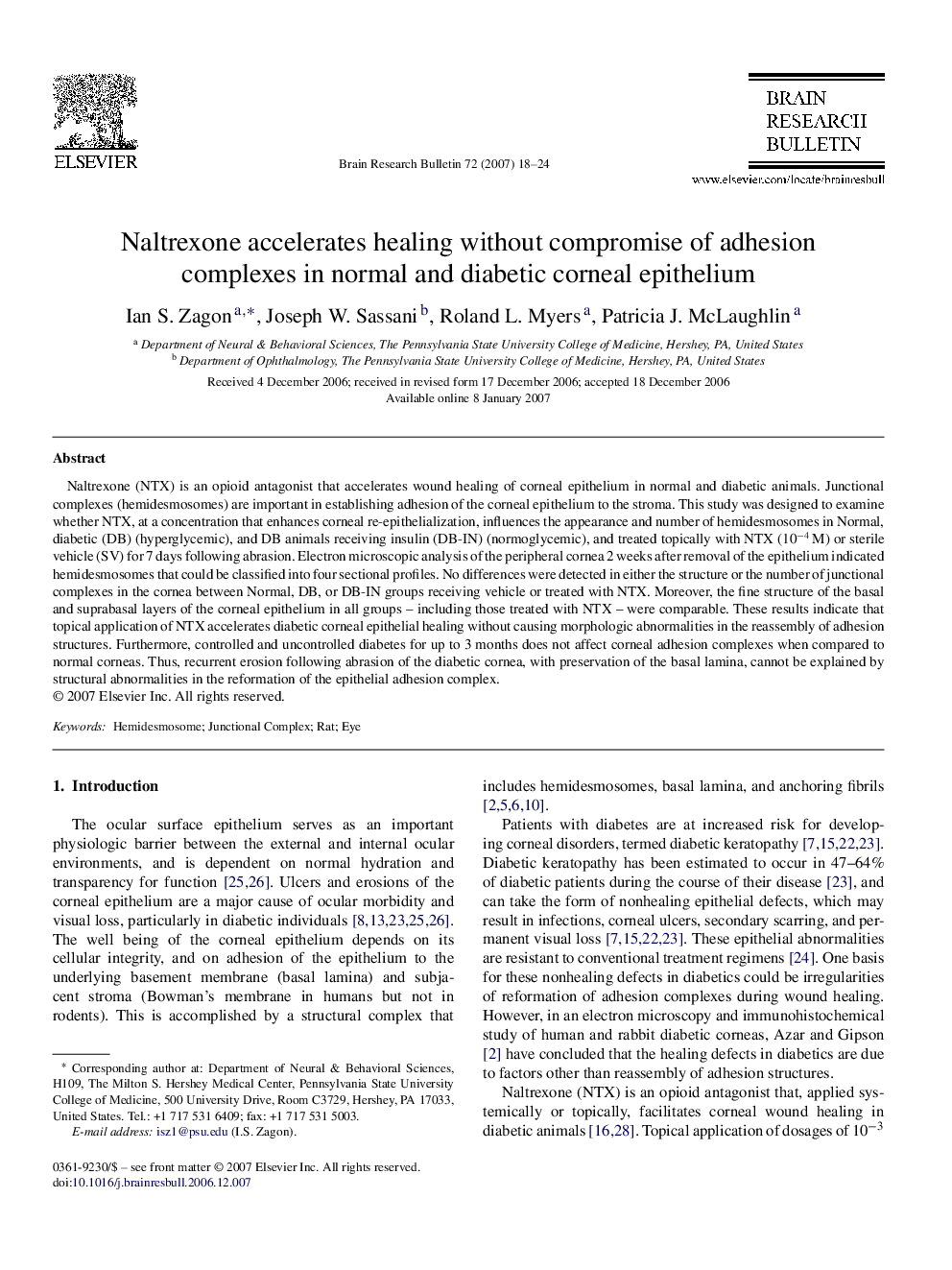| Article ID | Journal | Published Year | Pages | File Type |
|---|---|---|---|---|
| 6262203 | Brain Research Bulletin | 2007 | 7 Pages |
Naltrexone (NTX) is an opioid antagonist that accelerates wound healing of corneal epithelium in normal and diabetic animals. Junctional complexes (hemidesmosomes) are important in establishing adhesion of the corneal epithelium to the stroma. This study was designed to examine whether NTX, at a concentration that enhances corneal re-epithelialization, influences the appearance and number of hemidesmosomes in Normal, diabetic (DB) (hyperglycemic), and DB animals receiving insulin (DB-IN) (normoglycemic), and treated topically with NTX (10â4Â M) or sterile vehicle (SV) for 7 days following abrasion. Electron microscopic analysis of the peripheral cornea 2 weeks after removal of the epithelium indicated hemidesmosomes that could be classified into four sectional profiles. No differences were detected in either the structure or the number of junctional complexes in the cornea between Normal, DB, or DB-IN groups receiving vehicle or treated with NTX. Moreover, the fine structure of the basal and suprabasal layers of the corneal epithelium in all groups - including those treated with NTX - were comparable. These results indicate that topical application of NTX accelerates diabetic corneal epithelial healing without causing morphologic abnormalities in the reassembly of adhesion structures. Furthermore, controlled and uncontrolled diabetes for up to 3 months does not affect corneal adhesion complexes when compared to normal corneas. Thus, recurrent erosion following abrasion of the diabetic cornea, with preservation of the basal lamina, cannot be explained by structural abnormalities in the reformation of the epithelial adhesion complex.
